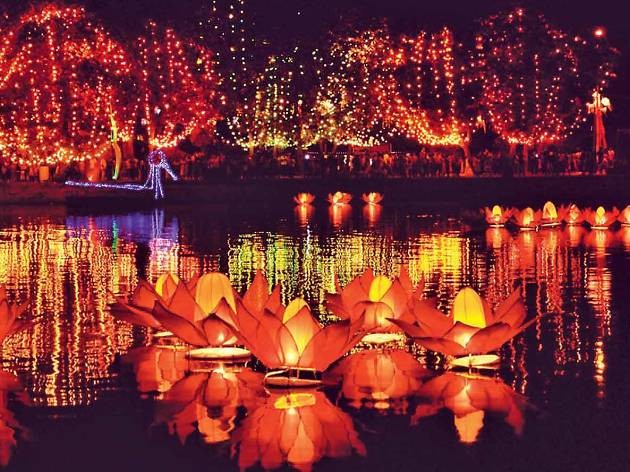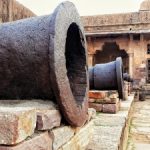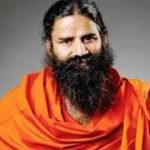Buddha’s birthday, known as Vesak Day (or Wesak), is celebrated on various dates in the spring throughout the world, and each Buddhist culture has its own traditions for the day. It is usually observed during the first full moon in the months April – May, and this year it falls on 30th April.
Theravada Buddhists combine observance of Buddha’s birth, enlightenment and death into one holiday, called Vesak or Visakha Puja. Tibetan Buddhists also combine observance of these three events into one holiday, Saga Dawa Duchen, which usually falls in June.
Most Mahayana Buddhists, however, separate observance of Buddha’s birth, death and enlightenment into three separate holidays held at different times of year. In Mahayana countries, Buddha’s birthday usually falls on the same day as Vesak. But in some countries, such as Korea, it is a week-long observance that begins a week ahead of Vesak. In Japan, which adopted the Gregorian calendar in the 19th century, Buddha’s Birthday always falls on April 8.
Whatever the date, Buddha’s Birthday is a time for hanging lanterns and enjoying communal meals. Joyous parades of musicians, dancers, floats and dragons are common throughout Asia.
Let us look at how the world celebrates the birth of Gautama Buddha on this day –

India
Known as the birthplace of Lord Buddha, the festival holds a special importance in India. Buddhist devotees from around the world visit the cities of Gaya, Sarnath and Kushinagar. Sarnath is the place where the lord gave his first sermon, a huge procession and a fair is organised. Followers are also seen donning white clothes holding prayers and chanting Buddhist scriptures. Buddha’s statue is also offered fruits, sweets and candles.
The day falls on the full moon night in the Hindu month of Vaisakh. Buddha Purnima or Buddha Jayanthi in South India or Tathagata is a public holiday in India. Buddhist people go to Viharas to observe an extended, full-length Buddhist sutra – as something like a service. The usual dress is pure white. On this day devotees preach the teachings of Lord Buddha, decorate Buddha’s idol with flowers, chant Buddhist scriptures, Non-vegetarian food is normally avoided and Kheer is served. Many locals, in India, Informally reference the celebration as “Buddha’s Birthday”, it actually commemorates the birth, enlightenment (nirvāna), and death (Parinirvāna) of Gautama Buddha in the Theravada tradition.
Nepal
In Nepal, Buddha’s birthday is celebrated on the full moon day of May. The festival is associated with a few different names Buddha Jayanti, Buddha Purnima, Vaishakh Purnima and Vesak. No matter what it is referred to as the day marks the birth of Shakyamuni Gautam Buddhaand his enlightenment.
The appropriate dress is pure white and non-vegetarian food is normally avoided. Kheer, a sweet rice porridge is served to recall the story of Sujata, a maiden who, in Gautama Buddha’s life, offered the Buddha a bowl of milk porridge after he had given up the path of asceticism following six years of extreme austerity. This event signifies one of the major links in his enlightenment.
During the celebration many tell the story of Buddha who followed the way of asceticism to attain enlightenment sooner. It is said that he sat for a prolonged time with inadequate food and water, which caused his body to shrivel so as to be indistinguishable from the bark of the tree that he was sitting under. When a girl named Sujata saw the weak Siddhartha Gautama, she placed a bowl of milk in front of him as an offering. Realizing that without food one can do nothing, the Buddha refrained from harming his own body.

Japan
In Japan, Buddha’s birthday–Hana Matsuri, or “Flower Festival”– sees those who celebrate going to temples with offerings of fresh flowers and food. Though it is not considered a national holiday in Japan, people make replicas of shrines with spring flowers and place Buddha idols on them. Temples hold special events to remember the lord. People pour ‘ama-cha’, a beverage prepared using several hydrangea, on Buddha idols decorated with flowers.
In Japan, although it’s not a national holiday, Buddha’s birth is also celebrated according to the Buddhist calendar. On this day, all temples hold service to remember Buddha. The first event was held at Asuka-dera in 606. Japanese people pour “ama-cha”, which is a beverage prepared from a variety of hydrangea, on small Buddha statues decorated with flowers – as if bathing a newborn baby.
They follow the ritual of ‘Washing the Baby Buddha’ – According to Buddhist legend, when the Buddha was born, he stood straight, took seven steps, and declared “I alone am the World-Honored One.” And he pointed up with one hand and down with the other, to indicate he would unite heaven and earth.
The seven steps the Buddha took are thought to represent seven directions–north, south, east, west, up, down, and here. Mahayana Buddhists interpret “I alone am the World-Honored One” to mean ‘I represent all sentient beings throughout space and time’– everyone, in other words.
The ritual of “washing the baby Buddha” commemorates this moment. A small standing figure of the baby Buddha, with the right hand pointing up and the left hand pointing down, is placed on an elevated stand within a basin on an altar. People approach the altar reverently, fill a ladle with water or tea, and pour it over the figure to “wash” the baby.
South Korea
The day is celebrated on the eighth day of the forth month in the Korean lunar calendar and is known as ‘Seokga tansinil’ meaning ‘Buddha’s birthday’. It has now grown as a fully-fledged festival and is recognised as an official holiday. Throughout the holy month the entire temple is covered with Lotus lanterns and on the auspicious day free meals and beverages are provided by temples. In South Korea the birthday of Buddha is celebrated on the 8th day of the 4th month in the Korean lunar calendar and is recognized as an official holiday. This day is called Seokga tansinil, meaning “Buddha’s birthday”.
It has now grown into one of the nation’s biggest cultural festivals. Lotus lanterns cover the entire temple throughout the month which are often flooded down the street. On the day of Buddha’s birth, many temples provide free meals and tea to all visitors.

Singapore
In Singapore, Buddha’s birthday is celebrated by decorating temples with Buddhist flags and lotus flowers and making offerings. Buddhist temples organise celebrations, people organise blood donation camps, visit old age homes, donate food, clothes and money, release caged birds or animals and chant mantras. People offer flowers, candles and joss sticks to the temples and the day ends with a candlelight processions through the streets. After several petitions, Vesak was announced a public holiday in 1955.
Sri Lanka
In Sri Lanka, Vesak is an official public holiday that spans two days -first full moon, during which time all liquor shops slaughterhouses are closed to ensure no death takes place during the celebrations. Temples hold celebrations as locals decorate their houses and the streets are filled with candles and lanterns. Dansalas—free buffets for monks and the underprivileged—are opened and pandols—decorative gateways symbolizing enlightenment—are erected, with different parts of Buddha’s story depicted throughout the country.
People in Sri Lanka decorate house and streets with candles and create huge pandals that depicts the life of Buddha. During the day they chant scriptures, offer prayers, listen to devotional songs, distribute food and sweets.

Thailand
People in Thailand celebrate the day with much fervour. It is a ritual to visit Bankok’s wats i.e. Buddhist temples and in particular ‘Wat Phra Kaeo’ as it houses the Emerald Buddha and Sanam Luang. The place also hosts several religious ceremonies such as sticking of gold leaf on Buddha statue and walking around the statue.
In Thailand, Buddha’s birthday—called Visakha Puja—is an official public holiday. People gather at their temples to hear speeches by monks and are expected to chant prayers and donate or offer food, flowers, and candles, which are meant to symbolize the finite nature of material life.

China and Hong Kong
Though officially a secular communist republic, China is home the largest population of Mahayana Buddhists with over 244 million adherents; it is even an official holiday in Hong Kong. The fódàn, as Buddha’s birthday is locally called, is held in Buddhist temples by making offerings to monks and lighting incenses. In China, the holiday focuses mainly on the ceremony of Yùfójié, or the Bathing the Buddha.
The bathing ceremony is common across Asia and involves pouring scented blessed water over a statue of the infant Buddha, whose right forefinger is pointed upwards towards the heavens and left forefinger downwards towards the earth in reference to the prince’s birth. According to legend, shortly after springing out of his mother’s womb, the Buddha said, “Above heaven and below heaven, none are equal to me. This is my last birth. There will be no more rebirths,” and the heavens responded by showering him with water and serpents (represented in China are as dragons).

Bangladesh
In Bangladesh on Buddha Purnima day, a proceeding of Buddhist monks and priests decorate temple in colourful decorations and candles. On the day of the festival the President and Prime Minister deliver speeches about the history and importance of Buddhism and religious harmony in the country. From noon onwards large fairs are held in and around temples and viharas selling bangles, food (largely vegetarian), clothes, toys and conducting performances of Buddha’s life, Buddhist music teaching about the Dharma and the 5 precepts. Later on Buddhists attend a congression inside the monastery where the chief monk would deliver a speech discussing the Buddha and the 3 jewels and about living the ideal life after which a prayer to the buddha would be conducted and people would then light candles and recite the three jewels and 5 precepts.

Cambodia
In Cambodia, Buddha’s Birthday is celebrated as Visak Bochea and is a public holiday where monks around the country carry flags, lotus flowers, incense and candles to acknowledge Vesak. People also take part in alms giving to the monks.
A candle procession takes place in evening at this day, and those who have seen it are never able to forget. People visit the temples early in the morning to offer food and sweets to the monks and listen attentively to the preaching of the religious figures. During these days, a torchlight procession takes place at the twilight and the main shrine is circumambulated three times.
People in the luminous procession carry flowers and light up incense sticks praying silent rest to Buddha. Following the preaching of Lord Buddha, the mothers meditate. Also during the Visak Bochea, some of their sons become priest with the intend to repay their parents and their ancestor in the future.
Must Read : Buddha Purnima : Story, Significance and History “Vesak”









